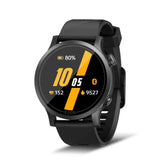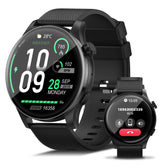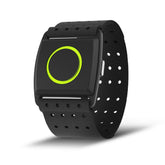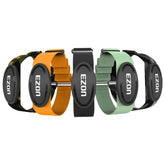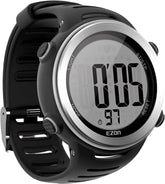Calorie Burning in Fitness: How It Works and What Affects It
Understanding how your body burns calories during exercise is vital for anyone looking to improve their fitness, lose weight, or maintain a healthy lifestyle. In this article, we will explore the science behind calorie burning, focusing on how factors such as intensity, duration, and type of physical activity, along with your body’s metabolism, influence the number of calories you burn. We’ll also discuss the role of calorie counters in tracking your progress and achieving your fitness goals.
The Science of Calorie Burning
Calorie burning, or energy expenditure, is the process by which your body uses energy to perform various functions, including physical activity, digestion, and maintaining essential bodily functions at rest. The total number of calories burned in a day is known as Total Daily Energy Expenditure (TDEE), which consists of three main components:
- Basal Metabolic Rate (BMR): The number of calories your body needs to maintain basic physiological functions at rest.
- Physical Activity: The calories burned during exercise and daily movements.
- Thermic Effect of Food (TEF): The energy required to digest and metabolize the food you consume.
Factors Influencing Calorie Burn
1. Intensity of Exercise
The intensity of your workouts significantly impacts how many calories you burn. Higher intensity workouts lead to greater calorie expenditure.
-
High-Intensity Exercise: Activities like sprinting, HIIT (high-intensity interval training), or heavy weight lifting can burn more calories in a shorter period than moderate exercises. For instance, a 30-minute HIIT session can burn significantly more calories compared to a 30-minute walk.
-
Moderate to Low-Intensity Exercise: While these activities may burn fewer calories during the exercise, they can still contribute to overall calorie burn, especially when performed for extended durations.
2. Duration of Activity
The longer you engage in physical activity, the more calories you will burn. For effective calorie-burning workouts, aim for at least 150 minutes of moderate-intensity exercise or 75 minutes of high-intensity exercise each week, as recommended by health guidelines.
- Consistency is Key: Regular workouts and gradually increasing the duration of your sessions can lead to substantial calorie burn over time.
3. Type of Physical Activity
Different types of activities burn calories at different rates. Here’s a quick overview:
-
Cardio Activities: Running, cycling, and swimming are typically high-calorie-burning exercises. For example, running can burn around 600-800 calories per hour, depending on speed and body weight.
-
Strength Training: While weightlifting may not burn as many calories during the workout, it can increase your resting metabolic rate by building muscle mass. This means you’ll burn more calories even when you’re not exercising.
4. Body Composition
Your body composition—the ratio of fat to lean muscle mass—affects your metabolism and calorie-burning efficiency. More muscle mass generally means a higher BMR, allowing you to burn more calories at rest.
5. Metabolism
Everyone’s metabolism is different, influenced by factors such as age, gender, genetics, and hormonal balance. A faster metabolism can lead to increased calorie burn, while a slower metabolism may require more effort to achieve the same calorie expenditure.
The Role of Calorie Counters
Tracking your calorie burn is essential for managing your weight and fitness goals. Here are some ways to effectively track your calorie expenditure:
1. Calories Burned Calculator
Using a calories burned calculator can help estimate how many calories you burn during various activities based on factors like weight, age, and exercise type. This tool provides valuable insights into your energy expenditure.
2. Smart Watch with Calorie Counter
A smart watch with a calorie counter is an excellent investment for those serious about their fitness journey. These watches track your heart rate, activity levels, and even sleep patterns, providing a comprehensive view of your health.
3. Calorie Counter Watch
A calorie counter watch can help you monitor your heart rate and calorie burn in real-time during workouts. Many models offer features such as GPS tracking and activity logging, which are useful for understanding your fitness progress.
Conclusion
Understanding the mechanics of calorie burning in fitness is crucial for anyone looking to improve their health and achieve their fitness goals. By recognizing how intensity, duration, type of activity, and individual metabolism influence calorie expenditure, you can tailor your workouts for maximum effectiveness. Utilizing tools such as a calories burned calculator, smart watches with calorie counters, and calorie counter watches can enhance your ability to track progress and stay motivated. Start your journey today, and unlock the power of effective calorie burning in your fitness routine!
